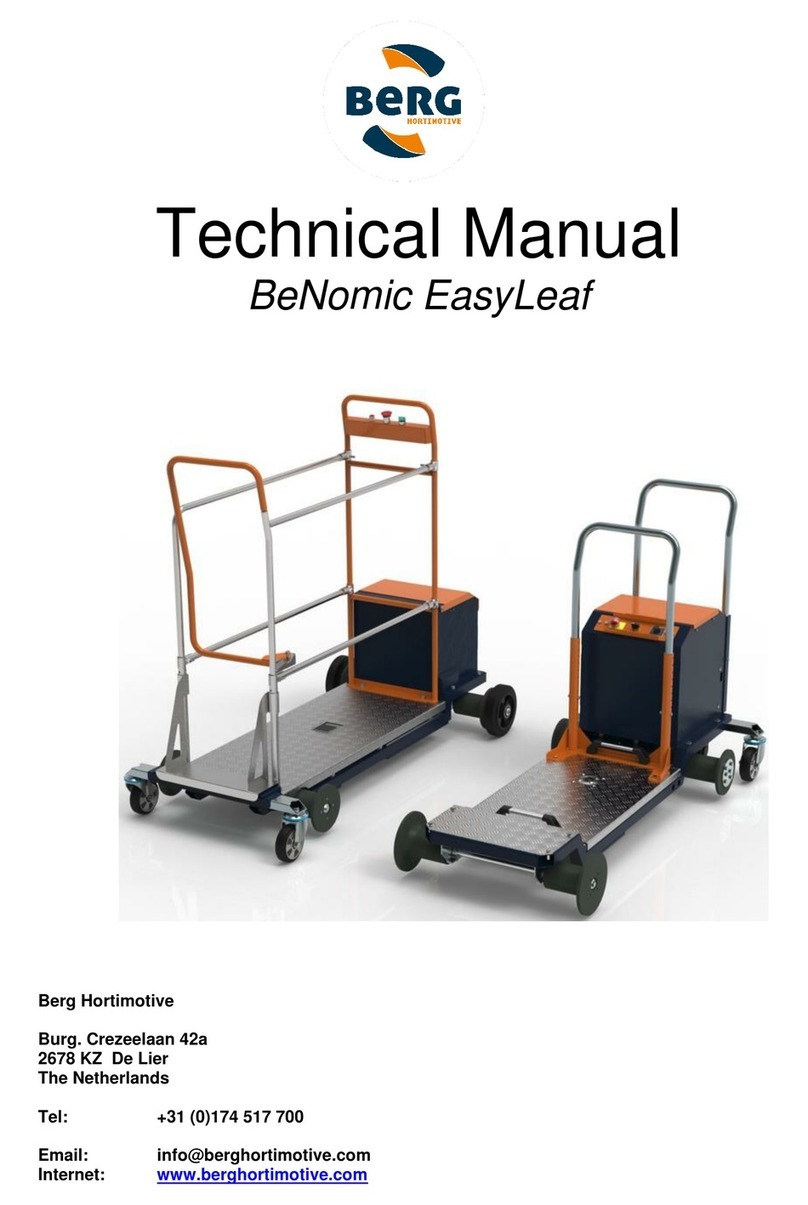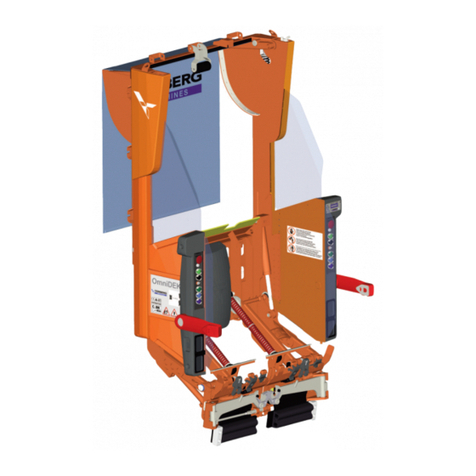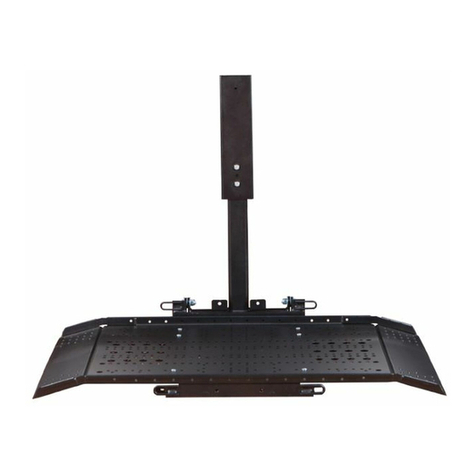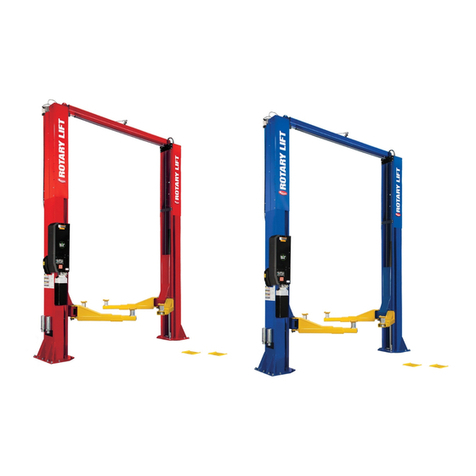7
USER AND MAINTENANCE MANUAL FOR HERMES PATIENT LIFT
cord, remote control and cylinders; if a cable shows a slight
burn, wear, or impact sign, or if the wires are visible, immediately
stop using the patient lift, and have the cables replaced by the
engineering department.
7.5) Preventive maintenance
The maintenance should be realised every year or every
10,000 lifting-lowering cycles (that is to say, about 30 uses per
day).
The maintenance should be performed by a competent staff
with electromechanical skills experienced with the maintenance
of similar devices.
The maintenance tasks do not require particular tools;
adequate tools should be used according to the best industry
practices.
- The crossbar suspension assembly should be imperatively
checked on each maintenance task.
Mechanical fastening, plays, and adjustments should be
realised according to the best industry practices.
In case of dysfunction or doubt, do not use the patient lift,
contact DUPONT MEDICAL customer service, and then,
depending on the case, replace the defective element(s).
7.5.1) Mechanical inspection :
- Before any use, check the PL functionality.
7.5.2) If the PL is functional and that there is no
excessive play between the PL moving parts, it is not necessary
to disassemble the joint pins of the side rails and to disassemble
the boom from the mast. Only the crossbar suspension should
be imperatively disassembled and checked.
- Visually check the welding. If some paint comes off near a
welding, it can indicate a welding defect.
- Visually check the alignments: of the parallelism between the
side rails and parallelism of the boom against the side rails, as
well as the squareness across the mast against the plan formed
by the side rails.
- Disassemble and check the crossbar suspension assembly
and replace the 3 plastic rings if they have wear signs.
- Check the tightening of all the parts.
- Check the fastening, wheel play, and brake performance. In
case of excessive play or malfunction, disassemble and clean
the front and rear wheels. If necessary, replace the defective
wheel(s).
7.5.3) If the PL is functional, but there is play between
the moving parts, it is necessary to follow the operations described
in paragraph 7.5.2, and to disassemble the joint pins of the side
rails and to disassemble the boom from the mast.
- Totally disassemble the joint pins and automatically replace
the plastic rings and/or the axles that have wear signs.
After reassembling the PL, ensure the security elements are
positioned: the pins should be locked, and the suspension pin
should be secured with its clamp. See the security label affixed
on the PL mast.
The mechanical parts that have cracks, wear signs or geometrical
defects should be replaced with original components provided
by Dupont Medical.
7.5.4) Electrical inspection:
- Check the remote control.
- Check the charging unit, the power supply unit, and the lifting
cylinder.
- Check the emergency stop and lowering.
- Condition of the electric cables (change the cables in case of
doubt).
Replace the electric cables and/or the components to which
they are connected if there are signs of wear, sheath cut, outlet
damage or plastic and sheath darkening around the coupling
area. Replace the defective components with original components.
Note: Never disassemble the protective housings of the cylinders
and of the remote control.
7.5.5) Battery inspection
- Fully charge the battery, and then try to lift a load. If the lifting
time is higher than 1.30 minute, replace the battery.
The battery should be changed every 2 or 3 years depending
on the duty cycle. The worn or malfunctioning parts should be
replaced with original parts provided by DUPONT MEDICAL.
7.5.6) Straps
The straps should be checked at least once a year, or more
regularly in case of intensive use, checking that: The sewing
are not undone, the upholstery and strap weft is not visible, and
there is no torn part. Never use a defective strap.
Never modify a strap.
Never use any other strap than the ones provided by DUPONT
MEDICAL.
The worn or malfunctioning parts should be replaced with
original parts provided by DUPONT MEDICAL.
Have some tries with a load before commissioning the patient
lift again.
7.5.7) Service book
Every maintenance operation or intervention should be recorded in
the service book that is at the end of these instructions.
7.5.8) Shipping, storage, and disposal
- The patient lift should be returned or transported in its original
packaging.
- Before storing the patient lift, clean it totally and check its
performance. Store the patient lift in a dry place away from
dust and humidity.
- During the storage period, the battery should be charged
every 3 months.
- When commissioning, after storing, charge the battery, and
check its performance before using it again.
- Storage temperature: 0 to + 50°C; Humidity: 10 to 80%
- Service temperature: +5 to + 40°C; Humidity: 30 to 80%
- The disposal of defective parts, packaging and batteries
should be performed by approved waste treatment centres.

































